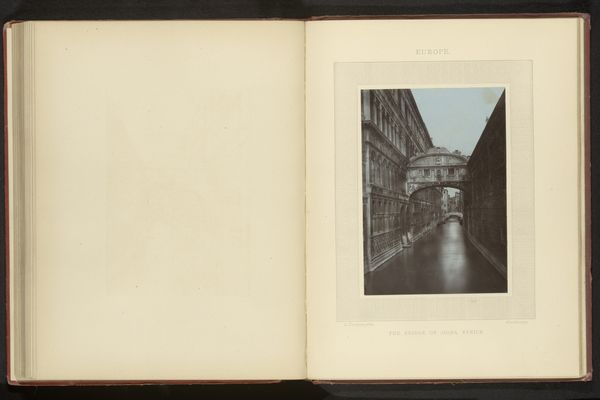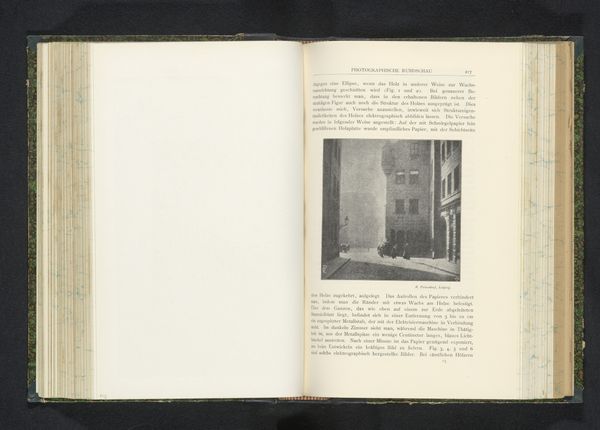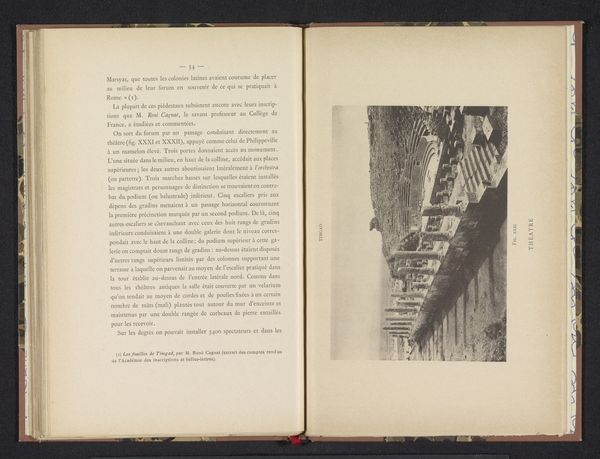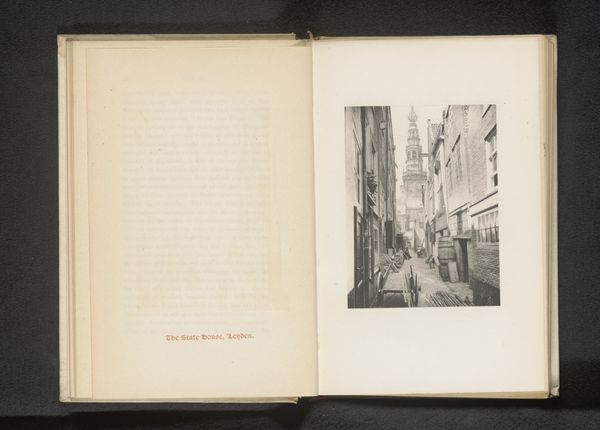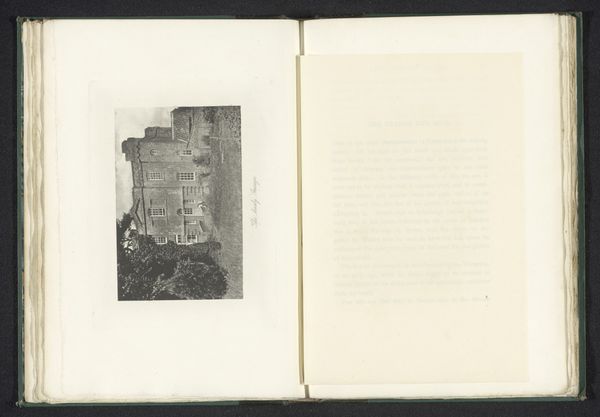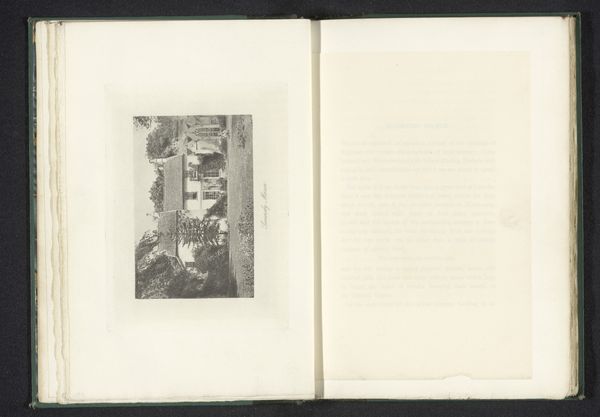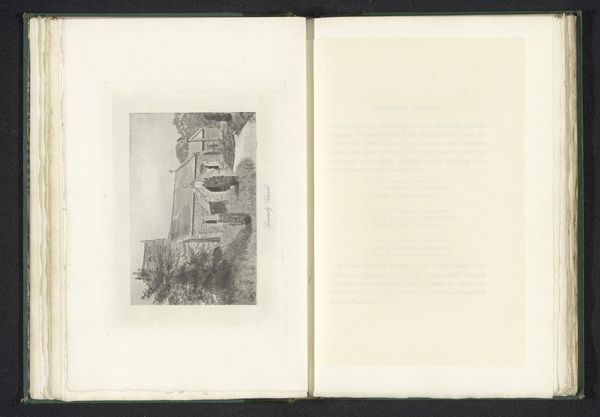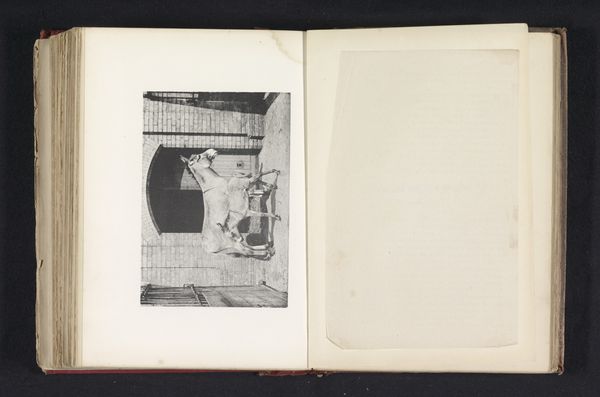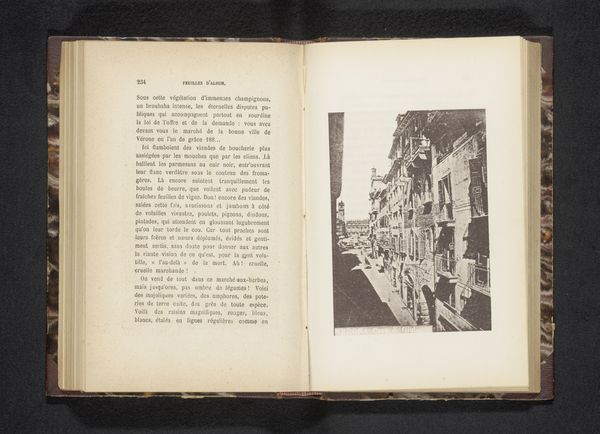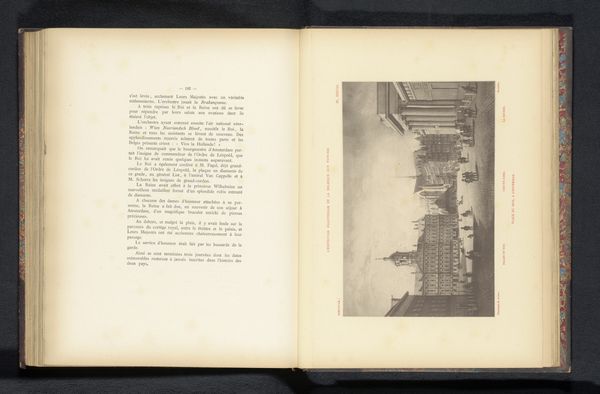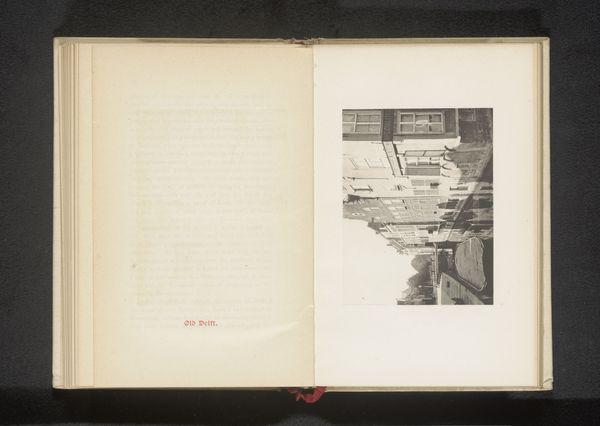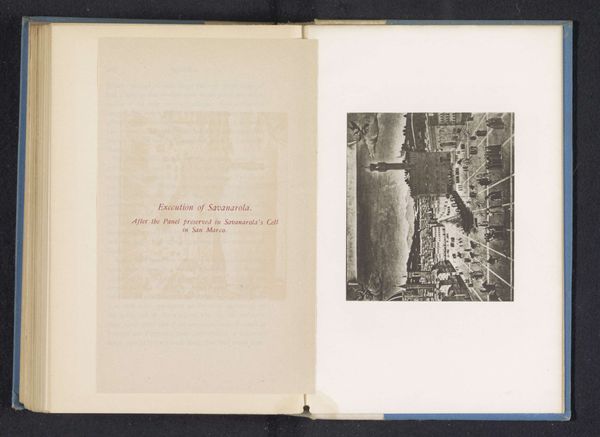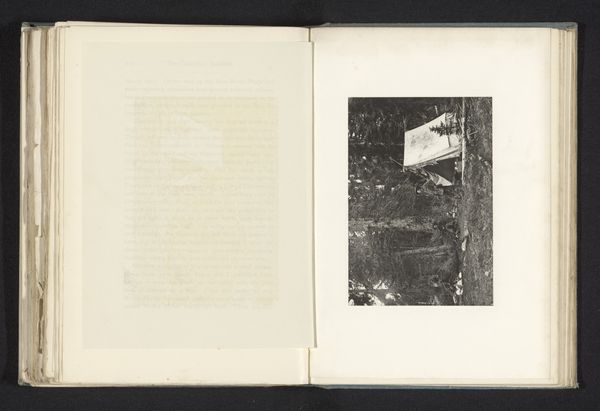
Dimensions: height 118 mm, width 90 mm
Copyright: Rijks Museum: Open Domain
Editor: This photogravure, "Gezicht op de Ponte dei Sospiri te Venetië," was created circa 1882-1892 by an anonymous photographer. Looking at it, I'm struck by the density of the architecture, that stone looming over such narrow waterways. How does a materialist approach inform our understanding of this particular photograph? Curator: Well, let’s consider the materials. It’s a gelatin-silver print, which means a specific industrial process was involved to capture and reproduce this image. This process relies on readily available materials to serve tourism: a Venice for sale. Think about the labor required to produce and distribute these prints at that time, who controlled the means of production, and for whom was this image created? Editor: That's fascinating. It moves beyond just admiring the pretty picture to consider the systems at play. The 'Venetian painting' art movement tag, would it suggest the work mimics the established styles of art while utilizing photography's reproducible medium? Curator: Precisely. The photo is, after all, functioning almost like a mass-produced postcard, capitalizing on the romantic imagery and labor of previous artists painting Venetian cityscapes. It allows broader consumption of an established artistic theme using newer technology. How might its dissemination affect those older forms? Editor: So the shift from paint to photography isn’t just about aesthetics; it represents a change in accessibility and the means by which art, or at least images, were consumed. It is a departure from slower hand reproduction toward more widely and rapidly disseminated reproductions of images. Curator: Exactly. And the use of gelatin-silver printing meant photographic studios could meet growing demands from tourists and the public for readily available images of places such as Venice. This creates a cycle of material production feeding off and altering a culturally accepted, romantic vision. What I find really telling is that it is a product with no artist attributed. The human labor element removed through mass-produced reproduction. Editor: It makes me realize how much of art history I’ve viewed in isolation, without considering those underlying material conditions and production networks. Curator: Seeing art this way, focused on how it’s made and consumed, often provides valuable and interesting context!
Comments
No comments
Be the first to comment and join the conversation on the ultimate creative platform.
